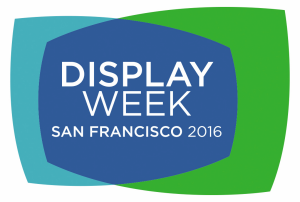
I love the SID DisplayWeek event. I have attended the event every year since 1995, so this was my 22nd visit. As I mentioned in an article last year, looking back at my early reports, there was no mention of any company from Taiwan, Korea or China. The industry at that time was dominated by Japan, the US and Europe. How things have changed.
Of the four days that I was at the show, I spent two in conference sessions, at the Business conference and the Investors’ conference. I then spent another day and a half on the show floor and in suites and meeting rooms. As usual, there was a lot of interest, but I was surprised at some of the big announcements and news that I heard. I’ve picked out my top four picks of the most important things. These four are all potential game changers, I think.
First, the big topic was OLED vs Quantum Dot (QD) LCDs and that provides one of the highlights. I think I’ll pick out the OLED story first, but that’s not because it’s more important than the QD one, but arguably it represents a change to a longer term problem. Kyulux from Kyushu, Japan and Cynora (I wish it didn’t sound like ‘sayonara’!) from Germany both talked about breakthroughs in blue OLED materials. Blue has been the weakest colour, with real difficulty in making deep blues or high efficiency blues. Both companies are claiming breakthroughs in developing OLED materials based on TADF technology. Kyulux is claiming 100% internal quantum efficiency, and 20% external. Given that current blue is around 5% external, that means a 4X boost in output power or much longer lifetimes or some combination of both. That’s a big leap forward. UDC, which already supplies a lot of the red and green material used in the industry, said that it also has a solution, but will not make an announcement until it can ship materials (the others are around two years away).
The second big breakthrough was in an extra slide, presented by Jason Hartlove, CEO of Nanosys, at the Business and Investors’ Conference. He said that the company has developed QD materials that are encapsulated at the particle level, so that they could be used in photoresist. That means that they can be used to replace the colour filters in a standard LCD and should boost brightness by 200% or thereabouts. As Hartlove said, it’s crazy to spend time making a really good white, only to filter it. Much better to create blue light and then convert some to red and some to green. The materials have been with ‘big customers’ for 9 months or so and so might make it to market for 2017. This could be really important for HDR as it will allow sets of 2,000 cd/m2 or more by 2017.
The third big story was a new colour E Ink technology that doesn’t use a filter, but uses CMY pigments to create a much wider range of colour than has ever been seen on an electrophoretic (E Ink-type) display. Again, we’re a couple of years away from shipment, but it looks very good. although at the moment, the time to create an image is very long (around 10 seconds to full stability).
A late highlight was ClearInk, which Ken wrote about in a Display Daily recently. Ken and I managed to meet up with them just at the end of the show and were glad we did. The company’s approach to EPD is different from E Ink, and as a result, it can offer high speed (enough for video) and high resolution, and later with colour, but in a manufacturing process that is very. very similar to LCD making.
So, an SID with four big breakthroughs has to be a good one! We’ll have all the details for you next week.
Bob

